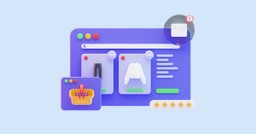Mastering Meta: The 2024 Meta Ad Trends
In the dynamic landscape of digital marketing, creating a coherent advertising strategy is not just a good-to-have; it’s a necessity. Especially when we talk about platforms like Facebook and Instagram, both powerhouses in the Meta universe.
If you’re reading this, chances are you’re a startup founder or a growth marketer, looking to make your mark in the digital sphere. So, let’s keep things simple, and let’s keep them practical.
A cohesive Meta ad strategy – Why should you care?
Now, why do you need a strategy, you ask? You could randomly post content and run ads, and you might even get a few leads. But without a strategy:
- You’re shooting in the dark.
- You might be wasting resources on the wrong audience or the wrong platform.
- And ultimately, you’re leaving your growth up to chance.
Sounds a bit risky, right? That’s where a cohesive Meta ad strategy comes into play.
Picture this: You’re on a road trip. You wouldn’t set off without a roadmap or GPS, would you? Unless getting lost is part of the adventure, you’d want to know the best routes, the pit stops, the scenic points. Similarly, your advertising strategy is your roadmap in the journey to business growth.
What’s on the agenda?
In the digital marketing realm, your roadmap needs to chart out the course from creating brand awareness to finally making the sale, and even beyond that. That’s where we’ll introduce you to the concept of a ‘Marketing Funnel’.
Don’t worry if it sounds too techy; it’s just a fancy term for your customer’s journey from knowing about you to loving you enough to buy from you, repeatedly.
We’ll also delve into the relationship between organic and paid strategies. If you’re thinking of them as arch-rivals, hold that thought! You’ll be surprised how beautifully they can complement each other.
Then, we will guide you on how to make the best use of organic reach on Meta platforms. Plus, there’s a secret weapon that too many businesses ignore: Data. We’ll show you how to harness it for ad targeting and optimization.
Last but not least, we’ll learn how to advertise on Facebook and Instagram for each stage of the funnel.
So, let’s buckle up and take a deep dive into the world of Meta advertising, where creativity meets strategy, and where your business meets its potential customers.
All set? Let’s learn how to advertise!
The Concept of the Marketing Funnel in Meta Advertising
In the world of digital marketing, the concept of a marketing funnel is as essential as the fuel in your car on a long journey. Wait! Did we say ‘funnel’? You might be thinking of a kitchen tool, right? But don’t worry, we’re not asking you to cook anything here, unless it’s success in advertising!
The marketing funnel is your customer’s journey with your brand, from the first point of contact to the final purchase, and even beyond.
Imagine a real-world funnel; it’s wide at the top and gradually narrows down. Similarly, a large pool of potential customers enter the top of your marketing funnel, and as they move down, they’re filtered until only the most interested ones make a purchase at the bottom.
Sounds complicated? Let’s break it down.
Explanation of the Marketing Funnel
The concept of the marketing funnel is rooted in the AAARRR model – Awareness, Acquisition, Activation, Retention, Revenue, and Referral. Quite a mouthful, right? But don’t worry, we’re about to make this easy-peasy.
1. Awareness: This is the top of the funnel (TOFU). Here, potential customers discover your brand for the first time. It’s like seeing a new book on the shelf. At this stage, your goal is to make as many people as possible aware of your brand.
2. Acquisition: Now, those who found your brand interesting move down the funnel. They follow you on Facebook or Instagram, visit your website, or subscribe to your newsletter. They are actively showing interest in what you offer. You’ve got them hooked, but the game is just starting.
3. Activation: At this stage, your acquired Instagram or Facebook users have their first positive interaction with your brand, like enjoying a post, commenting on it, or signing up for a free trial. It’s like reading the first few pages of the book and liking what you see.
4. Retention: This is where the rubber meets the road. You’ve got to keep your customers engaged. Regular posts, engaging content, and addressing user concerns are all part of this stage. You want them to keep reading your book and not abandon it halfway.
5. Revenue: Your customers finally make a purchase! The book is so gripping that they just had to buy it. It’s celebration time, but your work isn’t done yet.
6. Referral: The final stage is when your customers are so happy with their purchase that they refer their friends and family to your brand. It’s like they’re telling everyone they know to read this fantastic book they’ve discovered.
And that’s your marketing funnel in a nutshell! Let’s see how this applies to Meta advertising. When you understand how to create content for each stage of the funnel, you will be able to guide potential customers smoothly from one stage to the next.
In other words, you’re set to turn random social media scrollers into raving fans of your brand!
The Stages of the Funnel for Instagram and Facebook Marketing Strategy
Let’s dive deeper into each stage of the marketing funnel and how they apply specifically to advertising on Meta platforms.
1. Awareness
Welcome to the wide, open top of the funnel! The goal here is to cast your net as wide as possible to catch as many eyes as you can. For Meta platforms, this means using all the tools at your disposal to make your brand visible to potential customers.
Here’s a checklist to consider for Meta advertising at this stage:
- Creating engaging and shareable content: The more engaging your content is, the more likely people are to share it, increasing your brand’s visibility.
- Utilizing hashtags: On Instagram, hashtags can help your posts reach a larger audience.
- Facebook and Instagram stories: They are a great way to reach a large audience and increase your brand’s visibility.
- Eye-catching visuals: Great visuals are essential for standing out in the crowded social media space. Be it photos, infographics, or videos, make sure they’re high-quality, relevant, and interesting.
- Brand storytelling: Tell your brand’s story. Make it unique, authentic, and relatable. This not only creates an emotional connection but also differentiates your brand from the competition.
- Consistency: Consistency in visual branding and messaging across all your posts is key. This helps in building recognition and trust over time.
Remember, at this stage, people are just getting to know your brand. Make a good first impression!
2. Acquisition
You’ve made your brand visible, and people are interested. Now what? It’s time to turn those potential customers into actual leads by advertising on Facebook and Instagram.
Here’s how you can do that on Meta platforms:
- Calls to Action (CTAs): Use compelling CTAs in your posts and ads. Whether it’s “Sign up for our newsletter” or “Follow us for more,” make sure your CTAs are clear and compelling.
- Facebook and Instagram Ads: Run targeted ads to reach people who are likely to be interested in your product or service.
- Interactive content: Use quizzes, contests, and surveys to engage users and encourage them to interact with your brand.
3. Activation
Great, you’ve got leads! But how do you make them active users? Here’s where things get a bit tricky, but don’t worry, Meta platforms have got you covered.
- Personalize: Personalization is key at this stage. Use the data you’ve gathered to send personalized messages and offers.
- Regular engagement: Keep your audience engaged with regular content updates. Make sure you’re posting consistently and responding to comments and messages.
- Exclusive offers: Give your followers something they can’t resist – an exclusive discount or early access to a new product.
4. Retention
You’ve turned leads into customers. Job done, right? Not quite. Now you need to keep them.
Here’s how Meta platforms can help:
- Community building: Create a Facebook group for your customers. This can be a place for them to share their experiences and form a community.
- Customer service: Use Messenger and Instagram Direct to provide stellar customer service.
- Value-adding content: Keep providing valuable content that educates, entertains, or inspires your audience.
- Regular updates: Keep your audience updated about your brand. New product releases, behind-the-scenes glimpses, or simply sharing industry news can keep your brand at the top of their minds.
5. Revenue
At this stage, your goal is to convert those retained customers into revenue generators.
Here’s how you can do this:
- Flash sales and promotions: Announce exclusive sales or promotions on your Meta platforms.
- Product launches: Use Facebook and Instagram to announce new product launches.
- Retargeting: Use Facebook pixel to retarget ads to those who’ve shown interest in your products.
6. Referral
The final stage of the funnel is turning those happy customers into brand ambassadors.
Here’s how you can encourage referrals on Meta platforms:
- Referral programs: Launch a referral program and use your Meta platforms to promote it.
- User-generated content: Encourage users to share their experiences with your product or service. This not only provides you with free content but also acts as a powerful endorsement.
- Reviews and ratings: Encourage satisfied customers to leave reviews and ratings on your Facebook page.
Remember, this isn’t a one-size-fits-all approach. Feel free to tailor these strategies to your specific brand, target audience, and goals.
The marketing funnel is not just about moving customers down the stages; it’s about understanding their needs and delivering value at every stage.
By applying the funnel concept to your Meta advertising strategy, you can guide your customers smoothly along their journey, from being casual scrollers to becoming loyal brand advocates.
The Interplay Between Organic and Paid Strategies
It’s time to venture into one of the most fascinating aspects of Meta advertising – the intricate mix between organic and paid strategies.
But before we get into the game, let’s understand these two strategies separately. You can think of organic and paid strategies as the two engines powering your brand’s social media airplane. Each one is important in its own right, but together, they can take your brand to new heights!
Definition and Importance of Organic and Paid Strategies
Organic Strategy
An organic social media strategy refers to all the actions you take on social media platforms that don’t involve paid promotion. From the posts you share on your Facebook page to the stories you upload on Instagram, all these fall under organic social media activities.
Now, why should you care about organic strategy? Here’s why:
- Building relationships: Organic posts are your chance to connect with your audience on a personal level. They’re not about selling; they’re about sharing your brand’s story, values, and personality.
- Cost-effective: It doesn’t cost anything to post content on your social media profiles, making it a cost-effective way of reaching your audience.
- Long-term growth: A strong organic social media strategy can lead to sustainable, long-term growth.
Paid Strategy
Paid social media strategies, on the other hand, involve paying to promote your content to a specific audience. This could be through boosted posts, display ads, or sponsored stories on Facebook and Instagram.
Why is a paid strategy crucial? Here are a few reasons:
- Targeted reach: With paid ads, you can target specific demographics, locations, and interest groups. This ensures your content reaches the right people at the right time.
- Instant visibility: While organic growth takes time, paid promotions offer instant visibility. This is especially useful for new product launches or limited-time promotions.
- Trackable results: Paid promotions provide detailed analytics, helping you measure your ad’s performance and tweak your strategy accordingly.
You might be thinking, “Which strategy should I choose?” But the question isn’t about choosing between organic and paid strategies. It’s about using them together effectively. They’re not rivals; they’re partners.
Now, how do these two strategies work together? How does the organic strategy support the paid one, and how can paid strategies boost organic reach? Let’s explore this next in our advertising synergy on the Meta stage! Ready?
How Organic Strategies Support Paid Strategies
At first glance, organic and paid strategies might seem like two entirely different worlds. But when you delve deeper, you’ll see that organic strategies can be a powerhouse that fuels your paid campaigns.
Picture organic strategies as the hardworking stage crew that sets the scene for the stars of the show – the paid strategies. Let’s take a closer look at how this backstage magic works:
1. Organic Strategies Provide Valuable Insights
The beauty of organic strategies is that they allow you to experiment and learn. You can try different types of posts, formats, and content to see what resonates with your audience.
- Understanding your audience: Organic interactions provide a wealth of data about your audience – their likes, dislikes, and preferences. This can help you tailor your paid promotions for better results.
- Testing content: You can use organic posts as a testing ground for your ad content. The posts that receive the most engagement organically are likely to perform well as paid ads.
2. Building Trust and Credibility
In today’s digital world, consumers are savvy. They can spot an ad from a mile away and are more likely to trust content that doesn’t feel like a sales pitch.
- Authenticity: Organic content often feels more authentic to users. It gives your brand a human touch and helps build trust. This trust can enhance the effectiveness of your paid promotions.
- Brand advocates: High-quality organic content can turn your followers into brand advocates. They can amplify your reach by sharing your content.
3. Creating a Solid Foundation
Think of your organic social media presence as your brand’s home on the internet. It’s where interested customers can learn more about you, explore your offerings, and interact with your content.
- Landing spot: When users see your ads, they may visit your social media pages for more information. A strong organic presence ensures that they have plenty to engage with when they get there.
4. Community Building
Organic strategies are excellent for building a community and inspiring loyal customers. When you engage with your followers organically, you’re not just building an audience; you’re building relationships.
- Engagement: High engagement rates on organic posts can signal to the platform’s algorithm that your content is high quality, potentially boosting the reach of your paid ads.
- Customer loyalty: A strong community can lead to higher customer loyalty, which can result in better conversion rates for your paid promotions.
As you can see, organic and paid strategies aren’t just partners; they’re best friends, each one supporting and boosting the other. Your organic strategy lays the groundwork, paves the way, and sets the stage for your paid strategy to shine.
How Paid Strategies Can Boost Organic Reach
We’ve seen how organic strategies can set the stage for paid campaigns. Now, let’s flip the coin and see how paid strategies can boost organic reach.
It’s like the spotlight operator ensuring that the stage crew’s meticulous work gets the attention it deserves.
Let’s dive into the specifics:
1. Increasing Initial Visibility
The first step in boosting organic reach is to ensure that your content gets seen by as many people as possible. And that’s where paid promotions come in.
- Boosting new pages: If you’ve just set up your brand’s Facebook or Instagram page, paid promotions can help you gain initial visibility and attract your first set of followers.
- Promoting new content: Every time you launch a new product or publish a new blog post, small paid ad campaigns can help ensure it reaches a larger audience.
2. Enhancing Engagement
Paid promotions can help increase engagement rates, which in turn can boost organic reach. Here’s how:
- Incentivizing engagement: Contests, quizzes, and giveaways can encourage users to like, comment, and share your content. Promoting these posts can boost their reach and engagement.
- Promoting engaging content: If a particular post is getting high engagement, promoting it can help it reach an even larger audience.
3. Expanding Your Audience
Paid promotions can help you reach a wider audience, some of whom might go on to become regular followers and customers.
- Targeted promotions: Facebook and Instagram’s advanced targeting options allow you to reach users who are likely to be interested in your brand. Some of these users might follow your page, increasing your organic reach.
- Lookalike audiences: You can use lookalike audiences to reach users who are similar to your existing followers. This can help you grow your follower base and boost your organic reach.
4. Encouraging User-Generated Content
User-generated content (UGC) is a powerful tool for boosting organic reach, and paid strategies can help encourage more UGC.
- Promoting UGC campaigns: If you’re running a UGC campaign, such as a photo contest or a hashtag campaign, promoting it can help ensure it reaches a larger audience.
- Showcasing UGC: Promoting posts that feature user-generated content can encourage other users to create and share their own content.
As you can see, paid strategies don’t just work in isolation; they help boost your organic reach as well. It’s like a relay race, where paid and organic strategies pass the baton to each other, working together to take your brand across the finish line.
Developing an Organic Strategy for Meta
As we’ve discovered in our journey so far, organic and paid strategies are two sides of the same coin. Each has its role to play in your overarching advertising strategy.
Now, it’s time to focus on building an organic strategy for Meta. Picture it as tending to a garden: it requires patience, a nurturing touch, and consistent care.
But the end result is truly rewarding – a lush, vibrant presence that attracts a host of engaged followers. Ready to put on your gardening gloves and start tending to your digital garden? Let’s get started!
Mastering Meta: The 2024 Meta Ad Trends
Best Practices for Increasing Organic Reach
Increasing organic reach is like setting sail on a vast ocean. There’s no definitive map, as the currents of social media trends are constantly shifting.
However, there are some tried-and-true strategies, like trusty navigation tools, that can guide your journey. Let’s explore these best practices to increase organic reach on Meta platforms:
1. Consistently Produce High-Quality Content
Consistency and quality are the twin engines driving organic reach. The goal is to create content that your audience finds valuable, engaging, and worth sharing.
- Value-first approach: Each piece of content should offer something of value to your audience, whether it’s information, entertainment, or inspiration.
- Diverse content formats: Mix up your content formats to keep things interesting. This could include text posts, images, videos, infographics, live streams, or Stories.
- Consistent posting schedule: Aim to post consistently. While there’s no one-size-fits-all answer to how often you should post, start with a few times a week and adjust based on your audience’s response.
2. Encourage Engagement
Social media is a two-way street. Encouraging engagement can not only boost your organic reach but also foster a stronger connection with your audience.
- Engaging captions: Use your captions to spark conversations. Ask questions, invite opinions, or use prompts to encourage comments.
- User-generated content: Encourage your audience to create their own content related to your brand. This can increase engagement and also provide you with free content for your page.
- Timely responses: Make sure to respond to comments and messages in a timely manner. This not only boosts engagement but also shows your audience that you value their input.
3. Leverage User Communities
Community is at the heart of social media. Leveraging user communities can be a powerful way to boost organic reach.
- Facebook Groups: Creating a Facebook group for your brand can foster a sense of community among your followers. This can lead to increased engagement and organic reach.
- Collaborations and partnerships: Partner with other brands or influencers in your niche for shout-outs or collaborations. This can help you reach a larger audience.
- Community engagement: Engage with other relevant groups or pages on Facebook and Instagram. This can increase your visibility and help attract new followers.
4. Optimize for the Algorithm
The Meta platforms use algorithms to determine what content to show users. Understanding these algorithms and optimizing your content accordingly can help increase your organic reach.
- Post timing: Try to post when your audience is most active. This can increase the chances of them seeing and engaging with your post.
- Keyword usage: Use relevant keywords in your captions and hashtags. This can make your posts more discoverable.
- Engagement bait: Avoid tactics that the algorithms penalize, like engagement bait. These are posts that explicitly ask users to like, share, or comment in a manipulative manner.
5. Analyze and Adapt
Finally, remember to regularly analyze your performance and adapt your strategy accordingly. What works for one brand might not work for another, and what works today might not work tomorrow.
- Analytics: Use Meta’s inbuilt analytics tools to track your performance. Look out for patterns and trends to understand what type of content your audience prefers.
- Experiment and learn: Don’t be afraid to try new things and learn from your experiences. Social media is ever-evolving, and so should your strategy.
Just like a sailor adjusting the sails to catch the wind, these best practices can help you navigate the vast ocean of social media and boost your organic reach.
Creating Engaging Organic Content
Creating engaging organic content requires a mix of the right tools and strategies, careful preparation, and an understanding of your audience’s needs.
Let’s delve into the recipe for success when it comes to creating engaging organic content on Meta’s Facebook and Instagram platforms.
1. Know Your Audience
The first step to creating engaging content is understanding your audience.
- Audience insights: Use the data available on Meta’s platforms to understand your audience’s demographics, interests, and behaviors.
- Audience feedback: Pay attention to comments, messages, and reviews. These can provide valuable insights into what your audience enjoys or wants to see more of.
2. Make Your Content Valuable
When it comes to content, value is king. Whether it’s informational, inspirational, or entertaining, make sure your content offers something of worth to your audience.
- Educational content: Share tips, tutorials, or industry news that your audience will find useful.
- Behind-the-scenes: Give your audience a glimpse behind the curtain. This could be a tour of your office, a day in the life of a team member, or the process of creating your product.
- Storytelling: Share stories about your brand, your customers, or your community. Stories are engaging and can help build an emotional connection with your audience.
3. Use a Mix of Formats
Just like a feast is more enjoyable with a variety of dishes, using a mix of content formats can make your social media feed more engaging.
- Visual content: Images, infographics, and videos can be much more engaging than text alone. On Instagram, visuals are key, while on Facebook, a mix of formats usually works well.
- Stories: Facebook and Instagram Stories are a great way to share timely, engaging content. They’re perfect for quick updates, behind-the-scenes glimpses, or interactive content like polls or Q&As.
- Long-form content: While social media is often associated with short, snappy content, don’t shy away from long-form content. A detailed blog post or a lengthy video can provide immense value and help you stand out.
4. Engage with Your Audience
Engaging with your audience can make your content more appealing and foster a stronger community.
- CTAs: Encourage your audience to interact with your posts. Ask questions, invite them to share their thoughts, or include a call-to-action like “tag a friend who needs to see this!”
- Timely responses: Responding to comments and messages in a timely manner shows your audience that you value their input. It encourages them to engage more in the future.
5. Experiment and Learn
Finally, remember that creating engaging content is a process of trial and error. Don’t be afraid to experiment with different types of content and see what works best.
- Test different formats: Try different formats and see what your audience responds to best. This could be carousels, videos, or live streams.
- Analyze performance: Use Meta’s analytics tools to analyze the performance of your content. Look at metrics like reach, engagement, and shares to understand what type of content is most effective.
- Stay updated: Social media is constantly evolving. Stay updated with the latest trends and features on Facebook and Instagram and find ways to incorporate them into your content strategy.
Like a chef fine-tuning a recipe over time, creating engaging organic content requires patience, creativity, and a willingness to learn and adapt.
The Role of Community Management in Organic Reach
We’ve arrived at a significant destination – community management. Picture it as the heart of a vibrant city, pulsing with life, engagement, and connections.
Just as a city’s heart influences its reach and appeal, community management plays a pivotal role in enhancing your organic reach on Facebook and Instagram.
1. Building Relationships
Community management is not just about managing followers; it’s about building relationships. Effective community management fosters dialogue and interaction.
- Two-way communication: Ensure your brand’s voice is not the only one heard on your page. Encourage your audience to share their thoughts, ideas, and experiences.
- Respond and interact: Be proactive in responding to comments, messages, and mentions. A simple reply or a like can go a long way in making your followers feel seen and valued.
2. Encouraging Engagement
As the heartbeat of your social media community, your role as a community manager is to keep the engagement alive and kicking.
- Spark conversations: Use your posts as conversation starters. Ask questions, seek opinions, or encourage your followers to share their experiences or ideas.
- Host events: Live Q&As, webinars, or virtual meetups can provide a platform for real-time interaction, boosting engagement.
3. User-Generated Content
User-generated content (UGC) is a powerful tool in community management. It’s like a city’s local talent adding color and vibrancy to its culture.
- Encourage UGC: Encourage your followers to create their own content related to your brand. This could be through contests, challenges, or simply by sharing their experiences.
- Feature UGC: Regularly featuring user-generated content on your page not only provides you with free content but also makes your followers feel valued and appreciated.
4. Monitoring and Moderation
Just like a city’s administration ensures that public spaces are clean, safe, and enjoyable for all, community management involves monitoring and moderating your social media spaces.
- Maintain a positive environment: Set guidelines for community interactions and ensure they’re followed. Deal with negative comments or disruptive users promptly and professionally.
- Handle crises: If a problem arises, such as a customer complaint or a public relations issue, handle it professionally. Address the issue publicly, if appropriate, and take the necessary steps to resolve it.
5. Gathering Insights
Finally, community management can provide valuable insights that can help you understand your audience better and improve your organic reach.
- Feedback: Your community can be a gold mine of feedback and suggestions. Pay attention to common questions, concerns, or requests, and use this information to improve your products, services, or content.
- Trends: By staying closely connected to your community, you can stay on top of trends, topics, or memes that are popular among your audience. Incorporating these into your content can boost its relevance and appeal.
Community management is about fostering a space where your brand and your audience can interact, engage, and grow together. Like a city’s heart, it’s dynamic, vibrant, and essential for the wellbeing of your social media presence.
The Role of Data in Ads
We’re now moving into a crucial and exciting aspect of Meta advertising: data. Think of data as your compass in the vast ocean of advertising. It helps you navigate, make informed decisions, and steer your ship in the right direction.
The Importance of Data in Ad Targeting and Optimization
In the world of Meta advertising, data is not just important; it’s indispensable. It’s like the secret sauce that takes a dish from good to gourmet.
Here’s why data plays such a pivotal role in ad targeting and optimization:
1. Understanding Your Audience
Data can provide a wealth of insights about your audience. Like a detailed map, it can help you understand the landscape of your audience and navigate it effectively.
- Demographics: Data can tell you about the age, gender, location, and other demographic details of your audience. This can help you tailor your ads to suit their preferences.
- Interests and behaviors: Beyond demographics, data can also provide insights into your audience’s interests and behaviors. This can allow you to create ads that resonate with them on a deeper level.
- Custom Audiences: Facebook and Instagram’s Custom Audiences feature allows you to target ads to a specific group of users based on data. This could be users who have visited your website, used your app, or interacted with your content.
2. Optimizing Your Ads
Data doesn’t just help in creating ads; it also plays a key role in optimizing them. It’s like a seasoned chef tasting and adjusting a dish as they go.
- Performance tracking: Data allows you to track the performance of your ads. You can see which ads are performing well and which ones need tweaking.
- A/B testing: Data makes A/B testing possible. You can test different versions of an ad to see which one performs better and use these insights to optimize your future ads.
- ROI calculation: By tracking data like clicks, conversions, and sales, you can calculate the return on investment (ROI) of your ads. This can help you allocate your ad budget more effectively.
3. Discovering New Opportunities
Finally, data can help you discover new opportunities for growth. It’s like a telescope, helping you spot distant islands to explore.
- Lookalike Audiences: Facebook and Instagram’s Lookalike Audiences feature allows you to reach new users who are similar to your existing audience. This can help you expand your reach and discover new potential customers.
- Trend spotting: By analyzing data, you can spot trends in your audience’s behavior or interests. This can help you capitalize on new opportunities and stay ahead of the curve.
Data is a powerful tool in your Meta advertising toolkit. It’s like a guide, a chef, and a telescope all rolled into one, helping you understand your audience, optimize your ads, and discover new opportunities.
How to use Meta Insights for Data-Driven Strategies
As we delve deeper into the role of data in Meta advertising, let’s take a closer look at a powerful tool at your disposal: Meta Insights.
1. Understanding Your Audience
The first and perhaps most crucial step to a successful data-driven strategy is understanding your audience. Meta Insights provides a wealth of data to help you get to know your followers better.
- Demographics: Insights will give you a breakdown of your audience’s age, gender, and location. This can help you tailor your content and ads to better suit your audience’s preferences.
- Follower activity: You can see when your followers are most active on Facebook and Instagram. This can guide you in scheduling your posts and ads for optimal engagement.
2. Analyzing Content Performance
Meta Insights doesn’t just help you understand your audience; it also gives you a deep dive into how your content is performing.
- Engagement metrics: You can see how many likes, comments, shares, and clicks each of your posts received. This can help you understand what type of content resonates most with your audience.
- Reach and impressions: You can track how many people saw your post (reach) and how many times your post was seen (impressions). This can give you an idea of the potential scale of your organic content.
3. Tracking Ad Performance
When it comes to your paid campaigns, Meta Insights provides in-depth data to track your ad performance.
- Click-through rates: This shows you how many people clicked on your ad after seeing it. A low click-through rate might suggest your ad creative or an Instagram or Facebook ad copy isn’t as compelling as it could be.
- Conversion rates: By setting up Facebook Pixel or App Events, you can track how many users completed a desired action (like making a purchase or signing up for a newsletter) after clicking on your ad.
- Cost per result: This metric tells you how much each desired action (like a click, conversion, or app install) cost you. This is crucial for understanding the return on investment (ROI) of your ads.
4. Informing Your Strategy
Beyond just understanding and analyzing, Meta Insights can guide your overall strategy.
- Benchmarking: You can compare your performance to past periods to see if you’re improving over time. This can help you set realistic targets and track your progress toward them.
- Testing: Insights allows you to accurately measure the results of A/B tests. This can guide your decisions about what type of content, copy, or creative works best for your audience.
- Discovering trends: By regularly reviewing your Insights, you can spot trends or patterns in your audience’s behavior or your content performance. This can inform your content strategy and keep it aligned with your audience’s interests and preferences.
As you can see, Meta Insights is a powerful tool that can illuminate the path to a successful data-driven strategy. It’s like having a trusted advisor, guiding you with wisdom and insight as you navigate the world of Meta advertising.
Implementing Data Privacy Best Practices
As we traverse the realm of data in Meta advertising, we find ourselves at an integral juncture: data privacy. Imagine it as a fortress safeguarding your precious treasure, in this case, the trust and confidence of your audience.
To maintain this trust, it’s crucial to implement data privacy best practices. Let’s dive into how you can make your fortress impregnable.
1. Be Transparent
Transparency is the cornerstone of data privacy. It’s about letting your audience know what data you’re collecting and why.
- Privacy policy: Ensure you have a clear and accessible privacy policy. It should detail what data you collect, how you use it, and how users can control their data.
- Clear communication: Whether you’re collecting email addresses for a newsletter or using cookies on your website, make sure your audience knows what they’re opting into.
2. Limit Data Collection
When it comes to data collection, more isn’t always better. It’s about collecting what you need and no more.
- Necessary data: Only collect data that’s necessary for your marketing efforts or to improve user experience. Excessive data collection can lead to mistrust and legal complications.
- Consent: Always seek consent before collecting data. Whether it’s through a cookie banner or a checkbox, make sure your users know what they’re agreeing to.
3. Secure Your Data
Once you’ve collected data, it’s crucial to secure it. This is about protecting your users’ information from potential threats.
- Data security measures: Implement robust data security measures such as encryption, secure servers, and two-factor authentication.
- Data breaches: Have a plan in place in case of a data breach. This includes identifying the breach, mitigating the damage, and notifying affected users.
4. Respect User Rights
Data privacy isn’t just about protecting data; it’s also about respecting user rights.
- Access and correction: Users should have the right to access their data and correct any inaccuracies.
- Deletion: Users should be able to request that their data be deleted. Make sure you have a process in place to handle such requests.
5. Stay Updated
Finally, data privacy isn’t a one-time effort; it’s an ongoing commitment. It’s about staying updated with changing regulations and evolving user expectations.
- Privacy laws: Data privacy laws vary by location and are constantly evolving. Make sure you stay updated with laws applicable to your audience, such as the GDPR in Europe.
- Training and education: Ensure your team is trained in data privacy best practices and understands the importance of data privacy.
Data privacy is about balancing the benefits of data with the responsibility of protecting user privacy. Like a responsible steward of a fortress, it’s about safeguarding your treasure and maintaining the trust of your people.
Ads Structure for a Cohesive Strategy
As we further explore how to run Facebook and Instagram ads, we arrive at the structure of our ads – the blueprint that provides form and function to our advertising efforts.
Just as the structure of a building determines its strength and aesthetics, the structure of your ads influences their effectiveness and appeal.
The Relationship Between Ad Structure and Strategy
The ad structure is not merely about how your ad looks or what it says. It’s a strategic tool that plays a crucial role in your overall Instagram and Facebook advertising strategy. It’s like the blueprint of a building, shaping the way it’s built and how it functions.
1. Aligning with Marketing Funnel
Just as a building’s blueprint aligns with its purpose, your ad structure should align with the stage of the marketing funnel you’re targeting.
- Awareness stage: At the top of the funnel, your ads should be structured to catch attention and pique curiosity. This might involve compelling visuals, impactful headlines, and general information about your brand or product.
- Acquisition stage: Here, your ads should engage the audience and start a relationship with potential customers. The structure might highlight the unique selling proposition (USP) of your product or service, showing how it meets their needs or solves their problem.
- Activation stage: At this phase, your ads should motivate your audience to have their first successful interaction with your product or service. Ad structure can involve strong CTAs encouraging sign-ups or first purchases, along with providing an excellent user experience.
- Retention stage: Now your ads should focus on keeping your customers engaged and loyal. The structure could include updates about new features, customer service, community-building content, or even customer loyalty programs.
- Revenue stage: Your ad structure should now work to maximize the customer’s lifetime value. You might highlight upselling or cross-selling opportunities, showcase premium features, or present special offers.
- Referral stage: Finally, at this stage, your ads should encourage satisfied customers to refer your product or service to others. Ad structure could include referral programs, social share incentives, or highlighting the benefits of sharing your product or service with friends and family.
2. Balancing Organic and Paid Strategies
Your ad structure should also harmonize with your organic strategy. Like a building blending seamlessly into its surroundings, your ads should feel like a natural part of your audience’s Facebook or Instagram feed.
- Consistent branding: Your ads should reflect your organic branding in terms of tone, style, and messaging. This can provide a cohesive brand experience for your audience.
- Engaging content: Like your organic posts, your ads should also aim to engage your audience. This could be through interesting content, interactive elements, or engaging CTAs.
3. Optimizing for Platforms
Facebook and Instagram, while under the Meta umbrella, have unique characteristics. Your ad structure should be optimized for the platform it’s on.
- Facebook: Given the more detailed-oriented nature of Facebook, your ads can be more informational and text-heavy. Also, the platform allows different ad formats like carousel, video ads, and collection ads, so structure your content to exploit these formats.
- Instagram: Instagram is a more visually-oriented platform. Your ad structure should prioritize high-quality visuals and concise, engaging text. The ad formats such as Stories and Reels also offer unique ways to engage your audience.
The structure of your ads plays a pivotal role in your advertising strategy. Like a blueprint guiding the construction of a building, it helps shape your ads and align them with your objectives.
How to Structure Your Ads for Each Funnel Stage
We now find ourselves at the stage of structuring our ads to align with each funnel stage. Imagine it as building three different types of homes – each designed to meet the specific needs and preferences of its occupants. Let’s dive in and start building!
Awareness Stage: The Spotlight Home
At the awareness stage, your ads should be like attention-grabbing spotlight homes, designed to be visually appealing and ignite curiosity.
- Engaging headlines: Craft short, intriguing headlines to spark interest in your product or service.
- Bold visuals: Use captivating images or videos consistent with your brand’s visual style.
- Broad messaging: With an audience likely unfamiliar with your brand, focus on introducing your brand or product.
- Reach objective: On platforms like Meta, opt for the “Reach” objective to maximize your audience.
Acquisition Stage: The Inviting Home
At the acquisition stage, your ads should act as an inviting home, engaging potential customers and initiating a relationship.
- Detailed descriptions: Highlight the key features and benefits of your product or service.
- Engaging formats: Use interactive ad formats to showcase your product or service.
- Value proposition: Clearly communicate your unique value offering.
- Traffic or Engagement objective: On Meta, choose the “Traffic” or “Engagement” objective to increase interactions with your ad.
Activation Stage: The Starter Home
At the activation stage, your ads should motivate the audience to have their first successful interaction with your product or service.
- Strong CTA: Include a clear and compelling call to action.
- First-time offers: Offers for first-time users can encourage them to take the leap.
- Relevant landing page: The CTA should lead to a relevant landing page that facilitates the user’s first successful interaction.
- Conversion objective: On Meta, choose the “Conversion” objective to drive valuable actions.
Retention Stage: The Comfort Home
At the retention stage, your ads should focus on keeping your customers engaged and loyal.
- Community Building: Include content that fosters a sense of community among users.
- Loyalty programs: Highlight the benefits of your loyalty programs to keep customers engaged.
- Updates & Customer Service: Keep your customers updated about new features or services.
Revenue Stage: The Upgraded Home
Here, your ads should maximize the customer’s lifetime value.
- Upselling/Cross-Selling: Highlight the premium features or related products that customers might be interested in.
- Special offers: Present offers targeted at existing customers.
Referral Stage: The Neighborhood Home
At the referral stage, your ads should inspire satisfied customers to refer your product or service to others.
- Referral Programs: Highlight your referral program and its benefits.
- Testimonials: Sharing testimonials can encourage others to refer your product or service to their network.
Each stage of the AAARRR funnel requires a different ad structure, corresponding to the mindset of your audience.
Just like building homes for different needs, it’s about understanding your audience and crafting ads that resonate with them.
Wrapping Up: Mastering the Art of Meta Advertising
Alright, we’ve navigated through the thick of Meta advertising, decoding its ins and outs. Now, it’s time to recap what we’ve learned and get you, startup founders and growth marketers, ready to hit the road.
1. The Funnel: Your Pathway to Success
First up, we dissected the marketing funnel, your roadmap to customer conversion. Remember, each stage (Awareness, Acquisition, Activation, Retention, Revenue, Referral) needs a unique strategy. Tailor your approach as per the stage your audience is at.
2. Organic and Paid: Two Sides of the Same Coin
Next, we delved into the twin gears of success: organic and paid strategies. They’re like the accelerator and brakes of your car. To ensure a smooth ride, you need to balance both.
3. Data: Your GPS in the Journey
We also explored data, your guiding compass in Meta advertising. It’s the tool that helps you understand your audience, tweak your approach, and measure success. Keep it close!
4. Ad Structure: The Frame of Your Vehicle
Finally, we looked into how to structure your ads for each Instagram or Facebook sales funnel stage. Much like choosing the right vehicle for a journey, your ad structure should be custom-fit to suit your audience and your platform—Facebook or Instagram.
Remember, as startup founders and growth marketers, you’re in the driver’s seat. The journey through Meta advertising may have twists and turns, but equipped with these insights, you’re ready to steer towards success.
So, buckle up, turn the key, and rev your engines! Your adventure in the world of Meta advertising is about to kickstart. Go on, make your mark!
And don’t forget to harness the latest strategies with our “2024 Meta Ad Trend Checklist”. Download it now to stay ahead in your advertising journey and leave a lasting impact!














